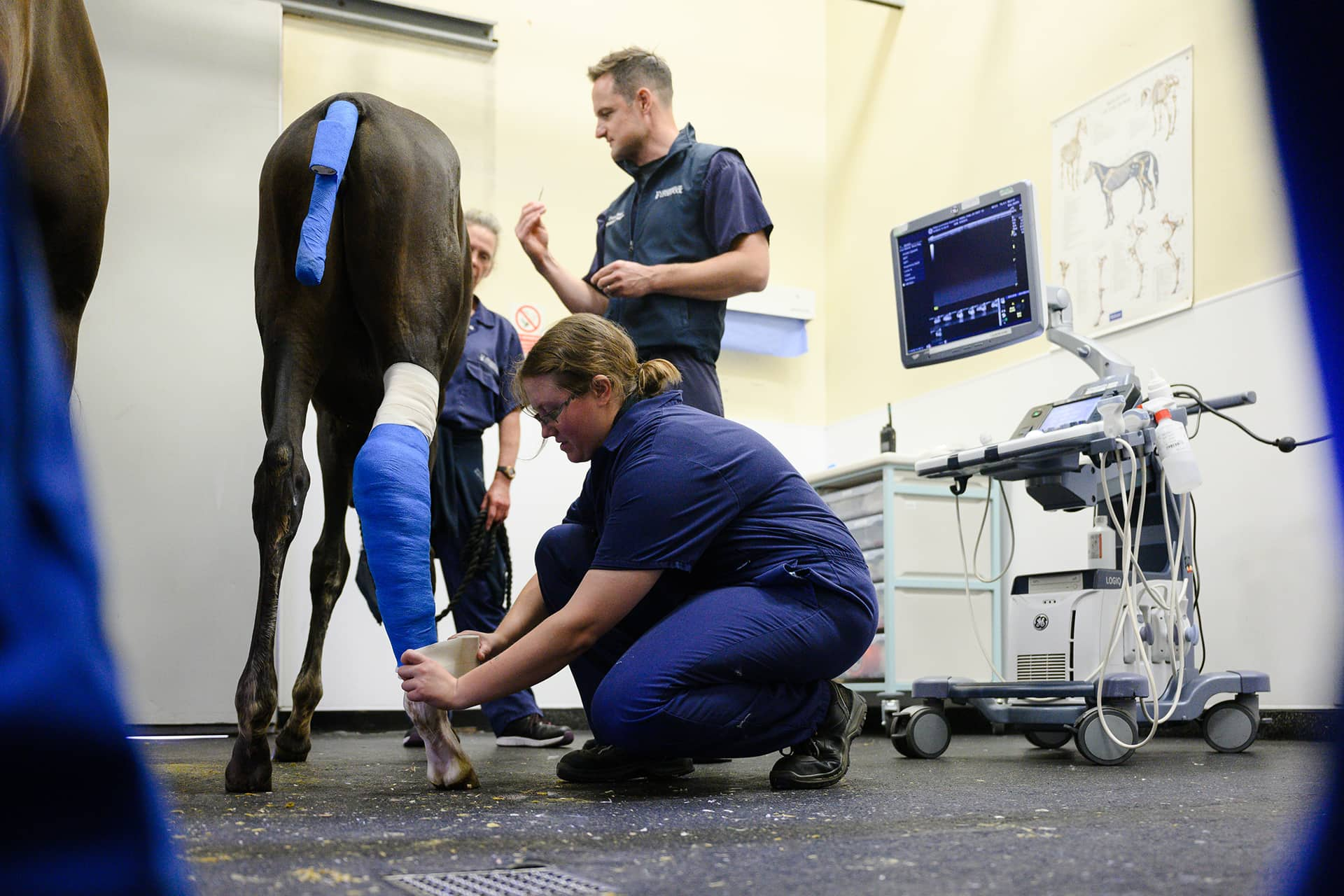Trauma and wound care
Horses and ponies commonly sustain injuries during turnout, exercise or when in the stable. These can range from minor injuries that can be managed routinely to life-threatening injuries that may require intensive care and surgery in the worst cases.

Specialist-led, team approach
Our hospital team are used to dealing with a variety of different traumatic injuries. We provide a full range of options for diagnosis and treatment based on the needs of an individual horse or pony and the owner's wishes.
Our surgery, internal medicine, diagnostic imaging and anaesthesia teams work together to ensure that each horse benefits from a full spectrum of expertise, maximising the chances of a successful recovery.
Initial assessment, stabilisation and treatment planning
At admission, our clinicians will perform an initial assessment to ensure that patients are stabilised before performing any further tests. This may include administration of additional pain relief, antibiotics or fluid therapy (including blood transfusion) if needed. A plan will then be made for further diagnostic imaging and treatment in conjunction with the owner.
Imaging may involve routine tests such as radiography (x-ray) and ultrasound in the first instance. This is important to rule out damage to deeper structures. This includes injuries to bones and tendons, including life-threatening infections of joints or fractures that require surgery. In some cases, trauma to internal organs within the abdomen or chest may have occurred and the horse may require critical care.
Some types of traumatic injuries may require advanced diagnostic imaging. These tests may be needed to provide more accurate information about the degree of damage sustained. This can be important to provide better information about options for treatment and likely prognosis. Advanced imaging that we are able to provide at the hospital includes Magnetic Resonance Imaging (MRI) in horses with penetrating injuries of the foot or Computed Tomography (CT) where trauma to the head has been sustained.
Wound management
Correct wound management in horses is essential to get the fastest healing and best possible cosmetic and functional outcome for each case. Chronic and non-healing wounds are common in equine patients and can be very frustrating for owners and vets. In addition, they can be expensive to treat when ongoing veterinary visits and dressing changes are required.
Surgery in these cases can be important to speed healing and reduce the costs of long-term aftercare. Surgical repair is particularly important for wounds in certain locations including around the eyelid margins, nostrils and legs.
We provide a full range of surgical expertise to manage challenging wounds, including wounds with extensive tissue loss or that are not healing as expected. This includes debridement, including the use of our versajet machine, suturing, bandaging, casting and splinting.
We can perform a range of skin grafting techniques in suitable cases to encourage the healing process. The hospital has one of the few meek micrografting veterinary surgical kits in the UK. In addition, our surgeons can perform a variety of advanced reconstructive surgical techniques.
Ongoing treatment and aftercare
The recovery process for horses that have sustained injuries and wounds varies on a case-by-case basis. We work with owners and each horse’s usual veterinary practice to develop an individualised care plan. This may include regular wound assessments, the use of specific types of bandages or dressings and the development of bespoke physical rehabilitation programmes.
We are happy to provide ongoing support including online consultations and hospital outpatient assessments where required.